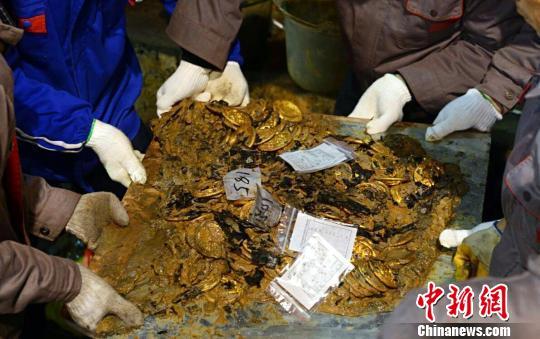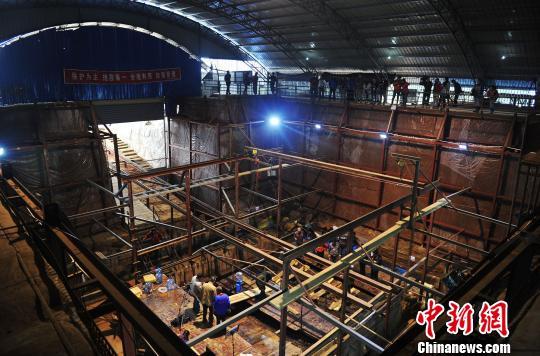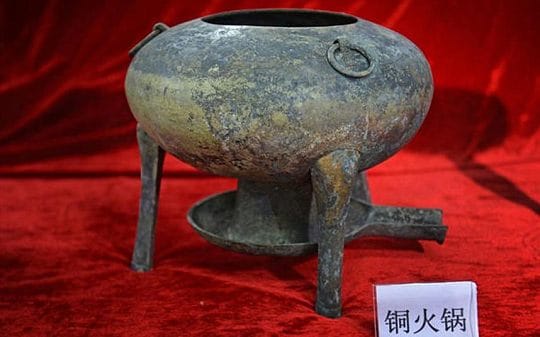

 |
| Gold coins from the tomb. |
The complete excavation of the tomb of the Marquis of Haihun of the Western Han Dynasty (206 BC-AD 24) has been accomplished, with a large number of precious relics discovered, according to a joint press conference held by the Jiangxi provincial publicity department, the provincial cultural department and the provincial cultural relics bureau on Oct. 9.

The excavation site.
Since the main coffin in the tomb was taken to a lab in January, archaeologists have examined the remains of the Marquis of Haihun lying on a colored mat in the coffin. A jade seal beside the remains displays the characters for Liu He, the given name of the marquis, which helped to confirm his identity. One hundred gold coins were found beneath the mat. Other relics discovered in the coffin include a jade pillow, a number of jade discs of various sizes, a jade sword and a total of 478 gold wares – the largest single batch of gold items ever found in a Han Dynasty tomb.

A three-legged bronze pot unearthed from the tomb. (Xinhua photo)
Archeologists also found 5,000 slips of bamboo writing paper. Through infrared scanning, the faded characters on the slips were rendered clear enough to read. Further scanning and evaluation of the slips will begin soon.
The Marquis of Haihun was the grandson of Emperor Wu, the greatest ruler of the Han Dynasty, during one of the most prosperous periods in China's history. His cemetery was discovered in 2011 in Nanchang, Jiangxi province. It covers roughly 40,000 square meters and contains eight tombs as well as a chariot burial site.
 Fire brigade in Shanghai holds group wedding
Fire brigade in Shanghai holds group wedding Tourists enjoy ice sculptures in Datan Town, north China
Tourists enjoy ice sculptures in Datan Town, north China Sunset scenery of Dayan Pagoda in Xi'an
Sunset scenery of Dayan Pagoda in Xi'an Tourists have fun at scenic spot in Nanlong Town, NW China
Tourists have fun at scenic spot in Nanlong Town, NW China Harbin attracts tourists by making best use of ice in winter
Harbin attracts tourists by making best use of ice in winter In pics: FIS Alpine Ski Women's World Cup Slalom
In pics: FIS Alpine Ski Women's World Cup Slalom Black-necked cranes rest at reservoir in Lhunzhub County, Lhasa
Black-necked cranes rest at reservoir in Lhunzhub County, Lhasa China's FAST telescope will be available to foreign scientists in April
China's FAST telescope will be available to foreign scientists in April "She power" plays indispensable role in poverty alleviation
"She power" plays indispensable role in poverty alleviation Top 10 world news events of People's Daily in 2020
Top 10 world news events of People's Daily in 2020 Top 10 China news events of People's Daily in 2020
Top 10 China news events of People's Daily in 2020 Top 10 media buzzwords of 2020
Top 10 media buzzwords of 2020 Year-ender:10 major tourism stories of 2020
Year-ender:10 major tourism stories of 2020 No interference in Venezuelan issues
No interference in Venezuelan issues
 Biz prepares for trade spat
Biz prepares for trade spat
 Broadcasting Continent
Broadcasting Continent Australia wins Chinese CEOs as US loses
Australia wins Chinese CEOs as US loses